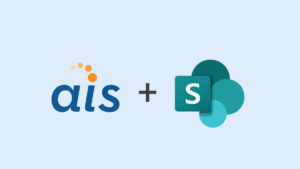In my job, I have an opportunity not afforded to most: I get to listen to all of the risks, challenges, and issues (a.k.a. problems) that other organizations face. (I know, you’re jealous, right?) From issues with large-scale hardware deployments to the risks of implementing new federal bureaucratic form processing, I get to hear it all. Without fail, nearly all of those discussions start with someone in the room declaring, “We do it different here.”
If I had a dollar for every time I heard, “we do it different here” during a federal project kick-off meeting, well…I would have about twenty or thirty bucks, but that’s not my point. The point is you don’t do it differently! Human nature is human nature and given similar constraints, regulations, policies and procedures, the outcomes will be similar. Beyond the obvious irony in nearly all organizations declaring their uniqueness, I am struck by the actual similarities of the problems.
 In our practice, one common problem we face is resistance to change. We get to see the effects of “new system anxiety” firsthand: The emotional reactions people have when they are introduced to the notion that new and better ways of doing business exist. Those emotions can range from silent protest to high conference room drama. And because my industry peers are primarily technologists, more focus is placed on technical implementation details rather than the psychological impact and risk (i.e. costs) of change management.
In our practice, one common problem we face is resistance to change. We get to see the effects of “new system anxiety” firsthand: The emotional reactions people have when they are introduced to the notion that new and better ways of doing business exist. Those emotions can range from silent protest to high conference room drama. And because my industry peers are primarily technologists, more focus is placed on technical implementation details rather than the psychological impact and risk (i.e. costs) of change management.
At AIS, our teams spend a lot of time optimizing and reengineering business processes around the SharePoint framework. One benefit to utilizing SharePoint as an application platform that is often overlooked is the cost savings relative to change management. SharePoint has a multitude of benefits for organizations and can certainly be a tool for solving a wide variety of needs. SharePoint and its root elements lend themselves to many common business scenarios. In other words, the basic features of the tool can be woven together to address just about any business case. This of course is by design, but it is not until deployed into an enterprise landscape that this benefit becomes clearly visible.
Truly realizing this benefit can be a bit more challenging than it sounds. Originally described by Everett Rogers, and expanded on by Geoffrey Moore in Crossing the Chasm, there are different reactions to the introduction of innovation and technology ranging from the small percentage of users who are eager early adopters to those less incentivized skeptics.
A good deployment strategy tailors its marketing strategies to each of Rogers’ user types. As Moore describes, targeted marketing and tactical rollouts aligned to the user segments help overcome the Chasm.
One of the key benefits of SharePoint and SharePoint composite applications is that the chasm from early adopters to a larger user community is leaped. That leap is accomplished because the tools/techniques/routines for performing job functions are already engrained.
To put it another way, when new applications are built on the SharePoint platform, the user community is less apt to resist change because they are already familiar with the steps for performing routine tasks (e.g. check-in/check-out, document libraries, list views, etc.). Because most of the common ingredients for resisting change are reduced or eliminated due to pre-established momentum, the likelihood of adoption increases, thereby leaping the chasm.
SharePoint and SharePoint composite applications can hardly be categorized as a discontinuous innovation. This is not the invention and proliferation of the microwave. However, many of our federal customers and their support staff consider our systems largely transformational in nature. Without the benefit of SharePoint as a common and pre-established framework, these changes would alter daily activities greatly.
[pullquote]Our experiences at AIS continue to reinforce the notion that an enterprise SharePoint training plan is a cornerstone to successfully fielding new applications.[/pullquote]Our experiences at AIS continue to reinforce the notion that an enterprise SharePoint training plan is a cornerstone to successfully fielding new applications. Our practice has established routine SharePoint familiarization training courses for our customers, designed and tailored for all skill sets and unique to their agency.
Taking time to socialize and educate on the platform helps foster a grass roots effort while reducing organizational angst. By developing consistent and standardized interfaces for SharePoint composite applications, users more rapidly assimilate to new workflows and business procedures. The benefits are both tangible, such as reduction in training costs, as well as intangible, such as job satisfaction and reduced staff anxiety.







